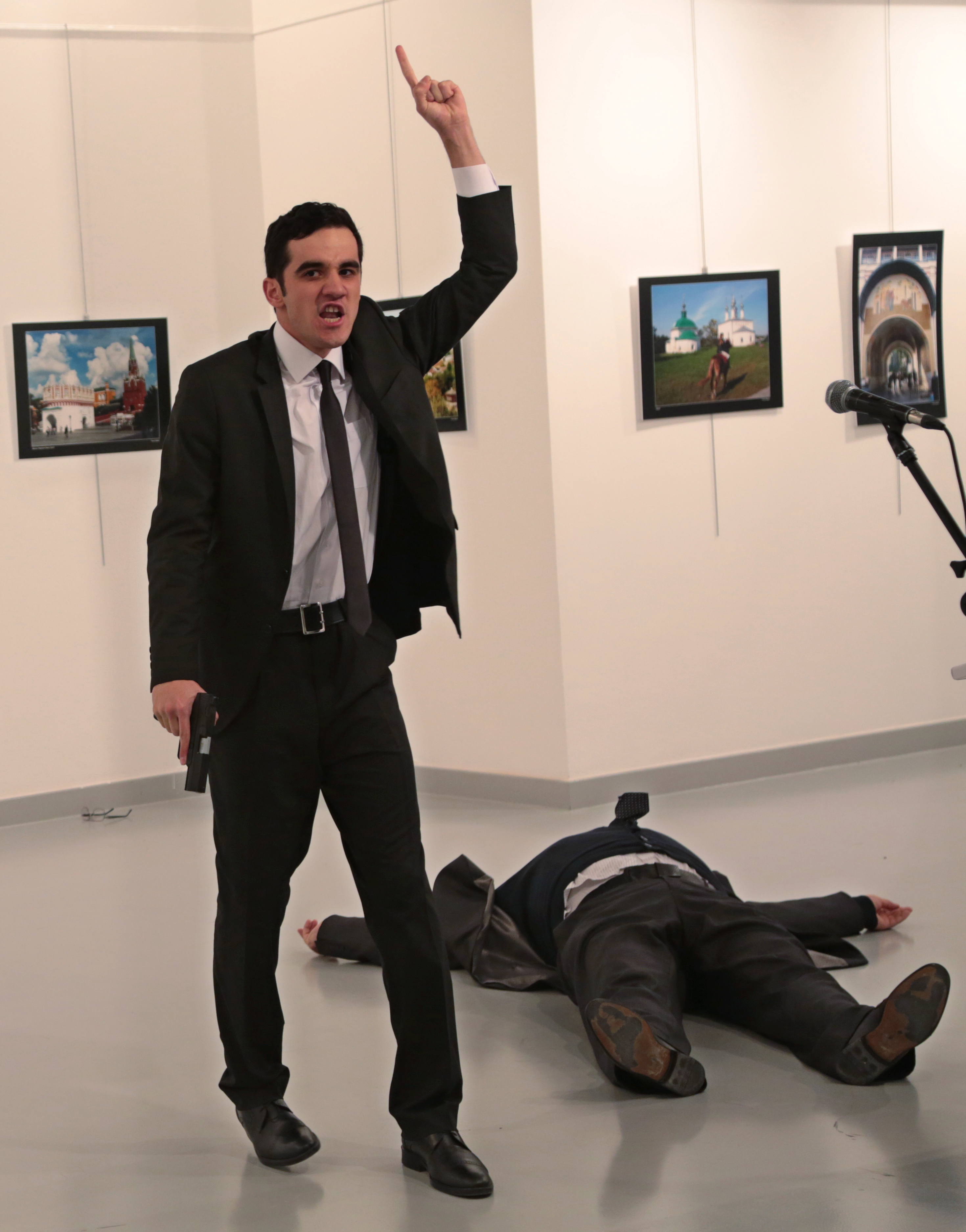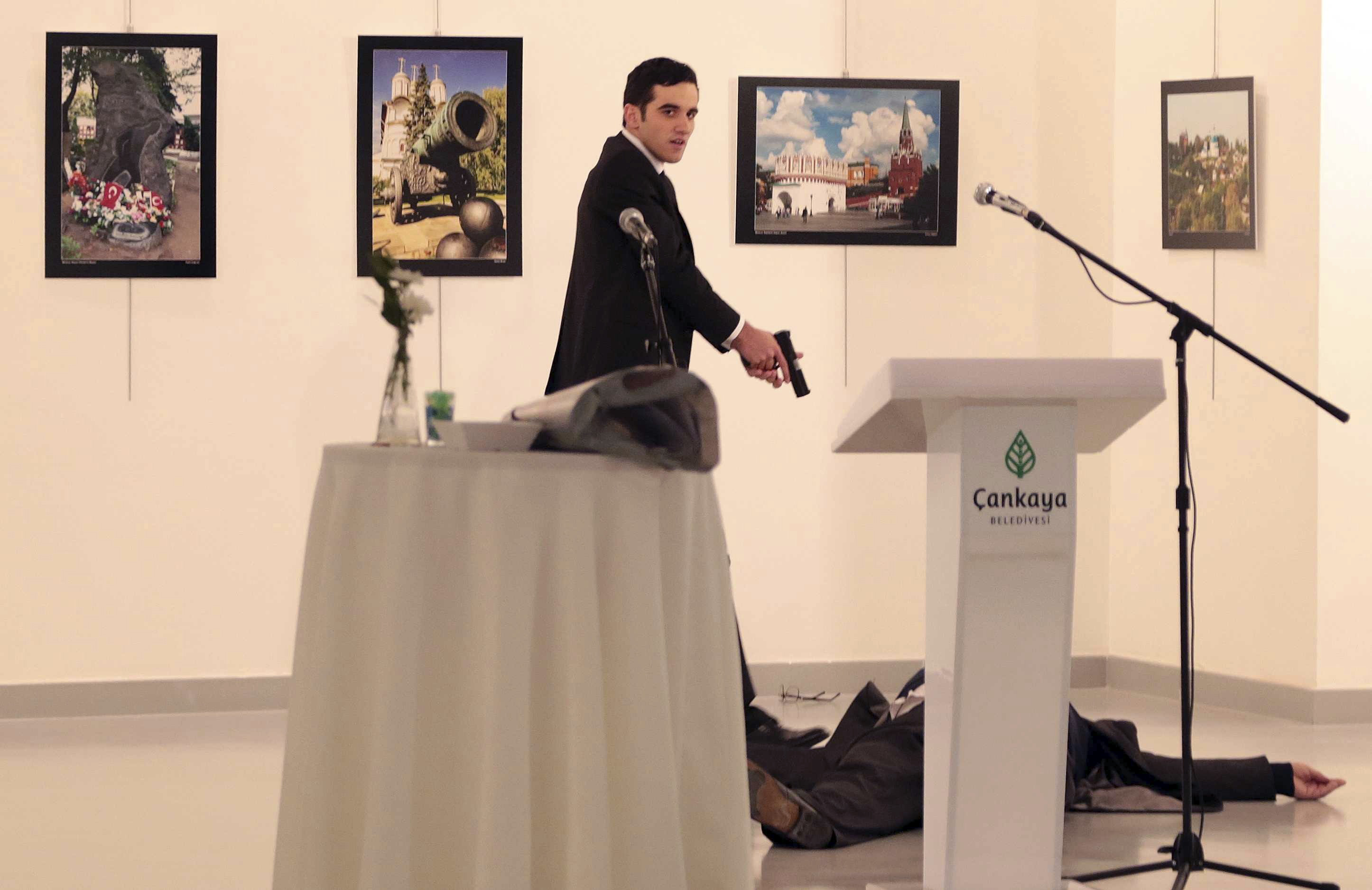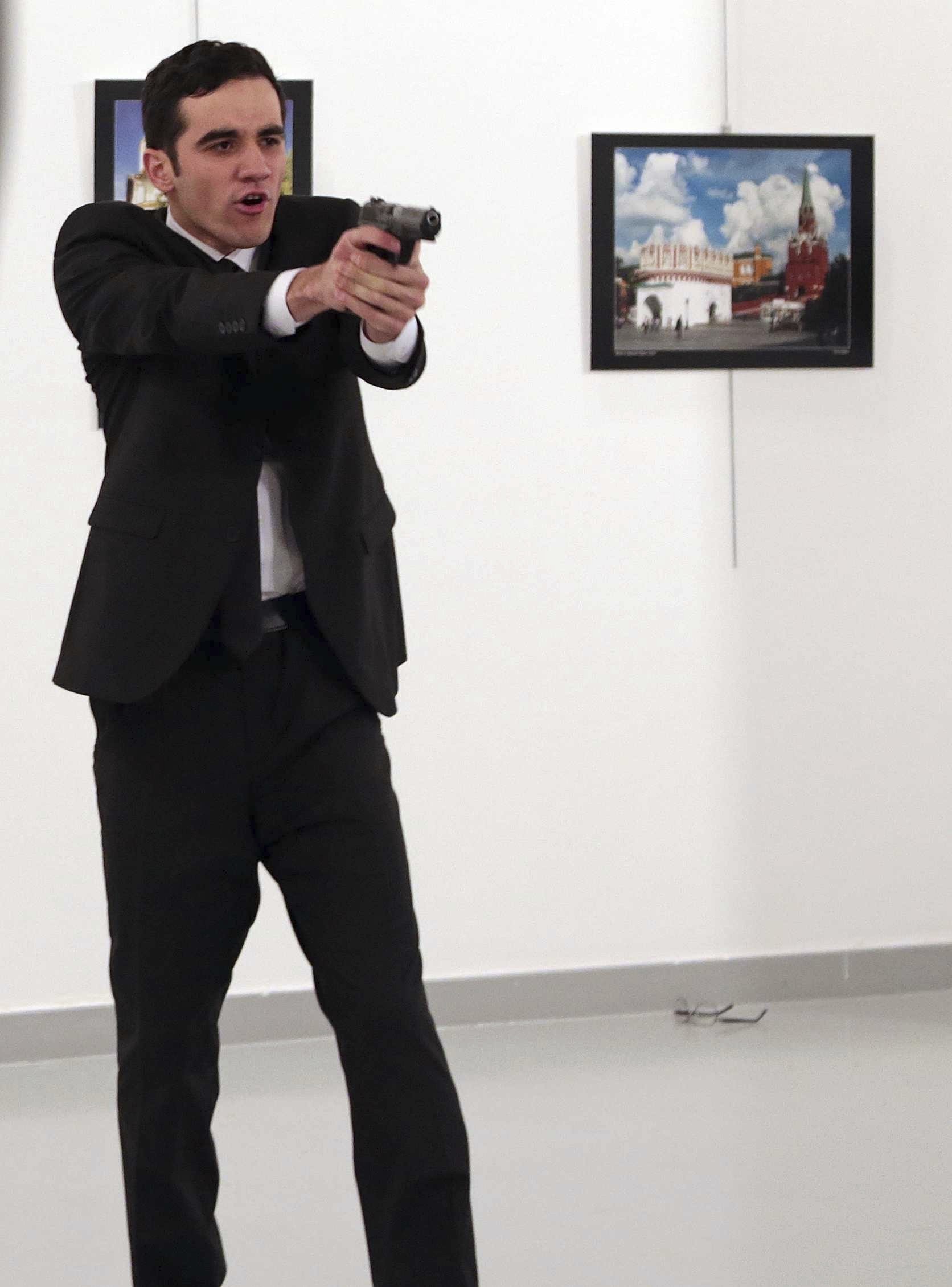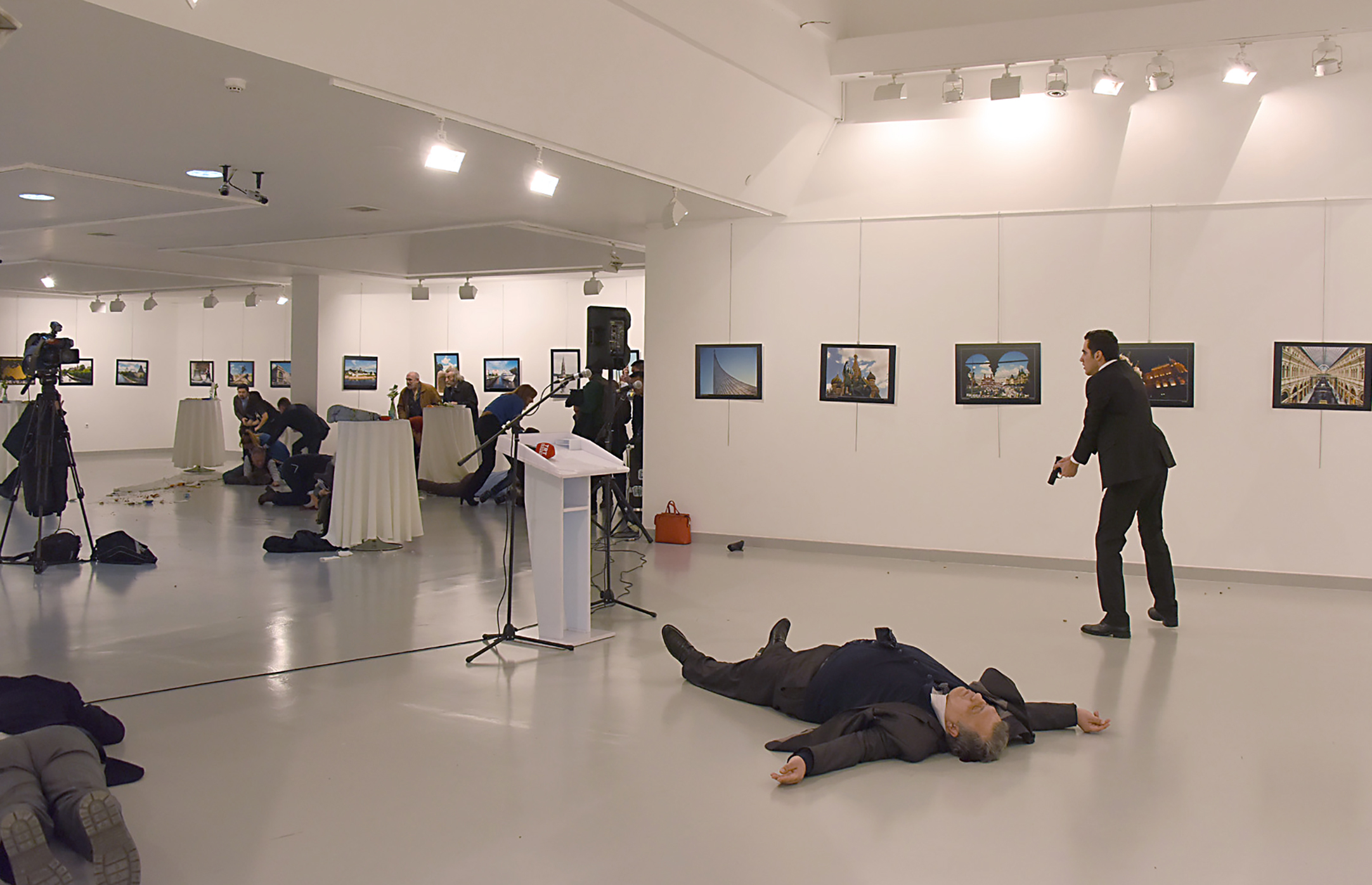The story here is obviously the assassination of the Russian ambassador to Turkey. And you can read all about that here.
But let’s honor the work of Associated Press photographer Burhan Ozbilici, who stood up, armed only with a camera, to do his job in the face of a man with a gun who was shouting “Don’t forget Aleppo” after he shot Andrei Karlov.
It’s a stunning display of courage in the interest of journalism.
“I think I was born as a journalist/humanitarian,” he writes on his LinkedIn profile.



The same must be said of the photographer of the following picture, not yet named by Getty Images, who captured the area where Ozbilici must have been positioned, although he does not seem to be clearly visible.

[Update: Ozbilici has written an essay for the AP ]
It took me a few seconds to realize what had happened: A man had died in front of me; a life had disappeared before my eyes.
I moved back and to the left, while the gunman — later identified as police officer Mevlut Mert Altintas — gestured with his gun at people cowering on the right side of the room.
At first, I couldn’t figure out what had motivated the shooter. I thought he might be a Chechen militant. But people later said he was shouting about the Syrian city of Aleppo.
So he was probably angry about Russian bombardments of Aleppo that were aimed at driving out anti-government rebels. Many civilians have been killed in the fighting.
He also shouted “Allahu akbar,” but I couldn’t understand the rest of what he said in Arabic.
The gunman was agitated. He walked around the ambassador’s body, smashing some of the photos hanging on the wall.
I was, of course, fearful and knew of the danger if the gunman turned toward me. But I advanced a little and photographed the man as he hectored his desperate, captive audience.
This is what I was thinking: “I’m here. Even if I get hit and injured, or killed, I’m a journalist. I have to do my work. I could run away without making any photos. … But I wouldn’t have a proper answer if people later ask me: ‘Why didn’t you take pictures?'”
I even thought about friends and colleagues who have died while taking photographs in conflict zones over the years.
